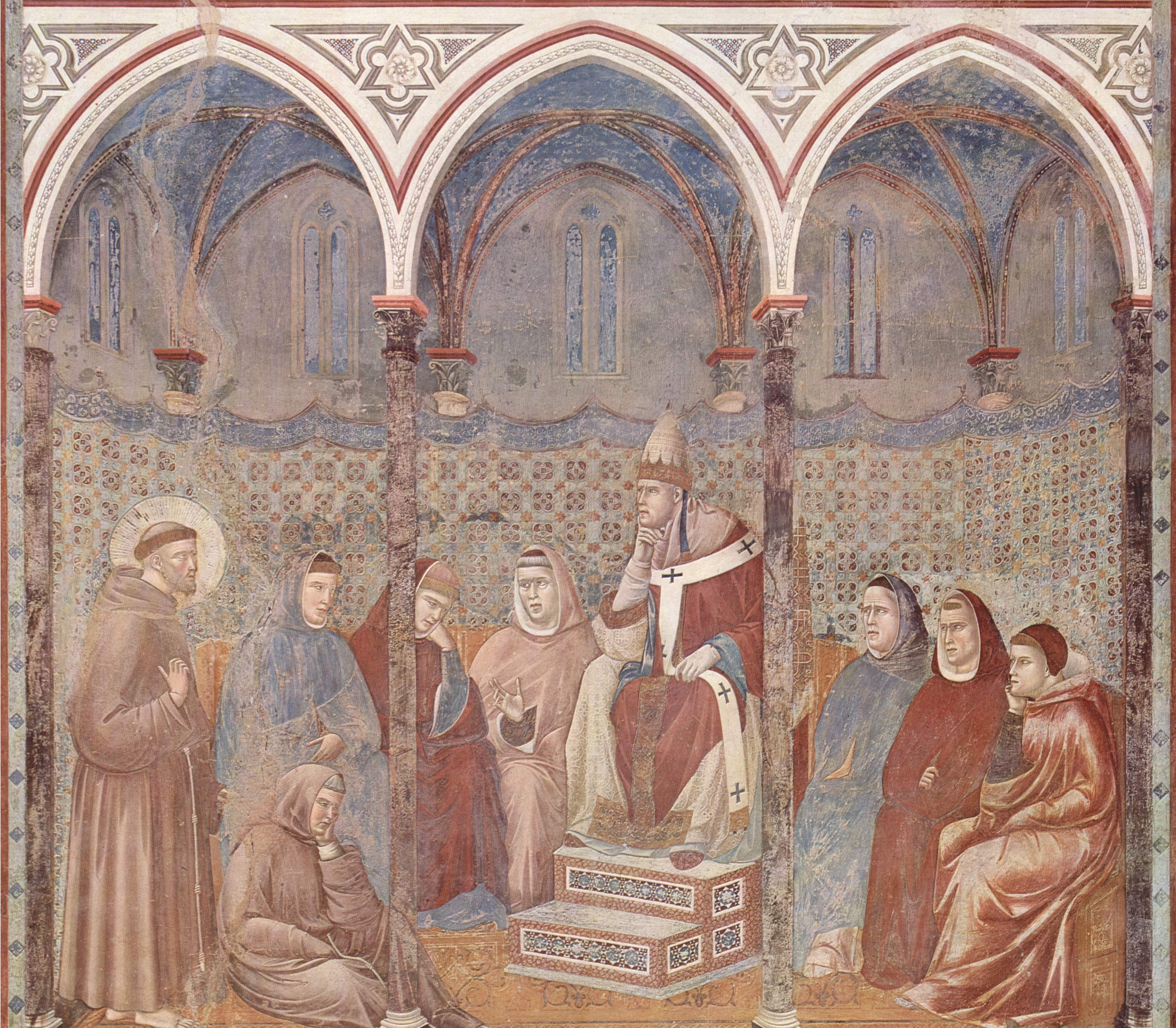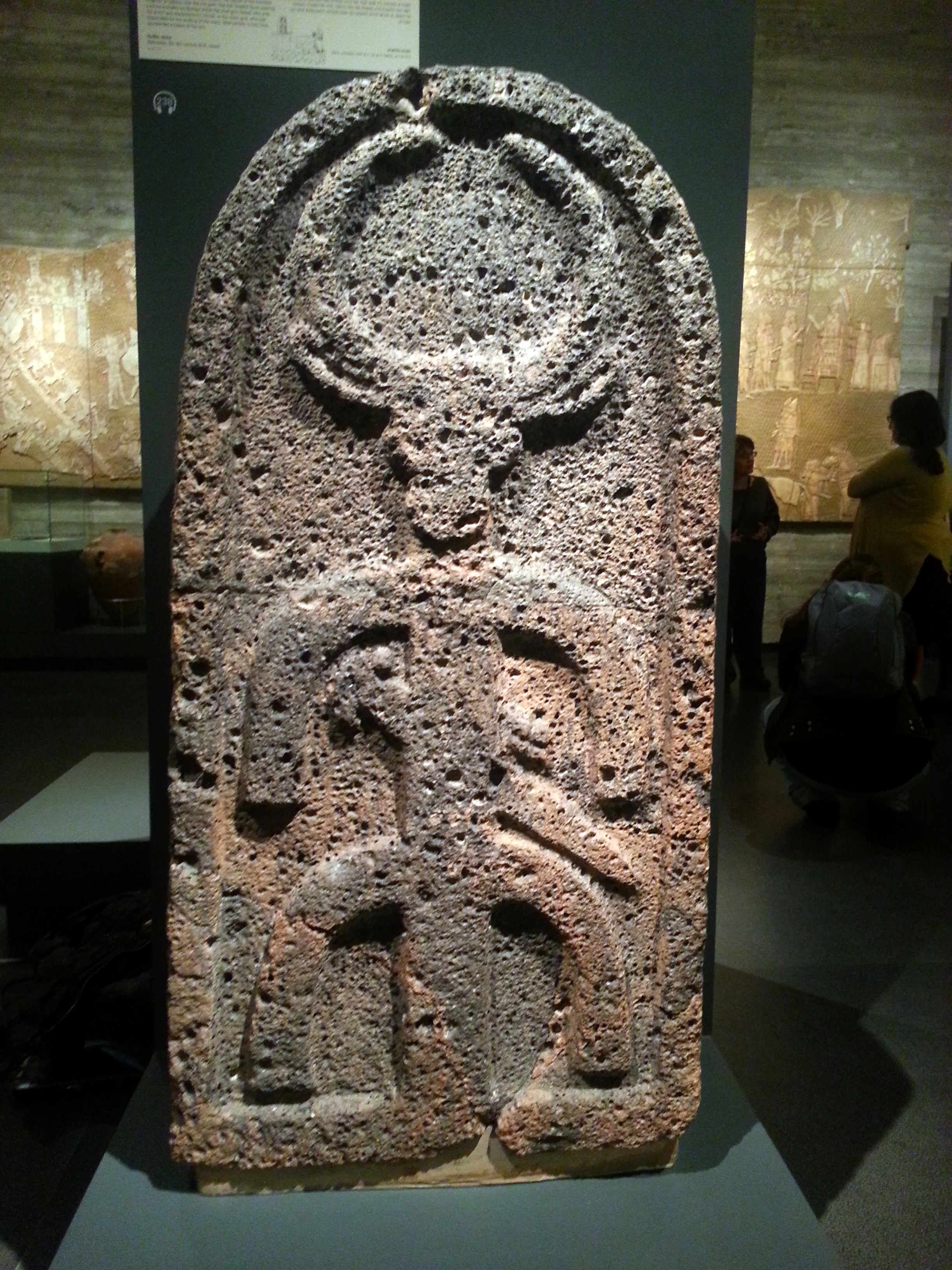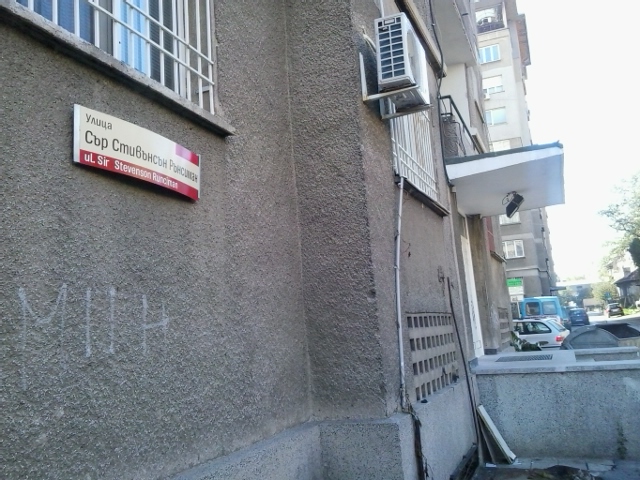|
1217
Year 1217 ( MCCXVII) was a common year starting on Sunday of the Julian calendar. Events Fifth Crusade * Summer – Various groups of French knights reach the Italian ports. King Andrew II of Hungary arrives with his army in Split, in Dalmatia. He is joined by German forces, led by Duke Leopold VI (the Glorious). At the end of July, Pope Honorius III orders the crusaders assembled in Italy and Sicily to proceed to Cyprus, but there is no transport provided by the Italian city-states, Venice, Genoa and Pisa. * September: Leopold VI finds some ships in Split, that bring him and a small force to Acre. Andrew follows him about a fortnight later; in Split, he receives only two ships. The rest of Andrew's army is left behind. Meanwhile, King Hugh I of Cyprus lands at Acre, with troops to support the Crusade. * November – The Crusader army (some 15,000 men) under Andrew II sets out from Acre, and marches up the Plain of Esdraelon. Sultan Al-Adil I, on hearing that th ... [...More Info...] [...Related Items...] OR: [Wikipedia] [Google] [Baidu] |
Andrew II Of Hungary
Andrew II (, , , ; 117721 September 1235), also known as Andrew of Jerusalem, was King of Hungary and King of Croatia, Croatia between 1205 and 1235. He ruled the Principality of Halych from 1188 until 1189/1190, and again between 1208/1209 and 1210. He was the younger son of Béla III of Hungary, who entrusted him with the administration of the newly conquered Principality of Halych in 1188. Andrew's rule was unpopular, and the boyars (or noblemen) expelled him. Béla III willed property and money to Andrew, obliging him to lead a crusade to the Holy Land. Instead, Andrew forced his elder brother, King Emeric of Hungary, to cede Kingdom of Croatia (1102–1526), Croatia and Dalmatia as an appanage to him in 1197. The following year, Andrew occupied Zachlumia, Hum. Although Andrew did not stop conspiring against Emeric, the dying king made Andrew guardian of his son, Ladislaus III of Hungary, Ladislaus III, in 1204. After the premature death of Ladislaus, Andrew ascended the thr ... [...More Info...] [...Related Items...] OR: [Wikipedia] [Google] [Baidu] |
Pope Honorius III
Pope Honorius III (c. 1150 – 18 March 1227), born Cencio Savelli, was head of the Catholic Church and ruler of the Papal States from 18 July 1216 to his death. A canon at the Basilica di Santa Maria Maggiore, he came to hold a number of important administrative positions, including that of Camerlengo. In 1197, he became tutor to the young Frederick II. As pope, he worked to promote the Fifth Crusade, which had been planned under his predecessor, Innocent III. Honorius repeatedly exhorted King Andrew II of Hungary and Emperor Frederick II to fulfill their vows to participate. He also gave approval to the recently formed Dominican and Franciscan religious orders. Early work He was born in Rome as a son of Aimerico, a member of the Roman Savelli family. For a time canon at the church of Santa Maria Maggiore, he later became Camerlengo of the Holy Roman Church on December 5, 1189 and Cardinal Deacon of Santa Lucia in Silice on 20 February 1193. Under Pope Clement III and P ... [...More Info...] [...Related Items...] OR: [Wikipedia] [Google] [Baidu] |
Al-Mu'azzam Isa
() (1176 – 1227) was the Ayyubid Kurdish emir of Damascus from 1218 to 1227. The son of Sultan al-Adil I and nephew of Saladin, founder of the dynasty, al-Mu'azzam was installed by his father as governor of Damascus in 1198 or 1200. After his father's death in 1218, al-Mu'azzam ruled the Ayyubid lands in Syria in his own name, down to his own death in 1227. He was succeeded by his son, an-Nasir Dawud. He was respected as a man of letters, and was interested in grammar and jurisprudence. By 1204, Jerusalem was his primary residence. Legacy He ordered and contributed to the construction and restoration of many buildings inside the (the Noble Sanctuary), Jerusalem: * Extending the Dome of the Rock terrace by 18 meters westward. * Two water-distribution structures: as a donor, not as a patron (one who ordered them built): ** 1210 or 1211: the Cistern of al-Muʿaẓẓam ʿĪsā, a water tank. ** 1216 or 1217: the Shaʿlān Sebil, a sebil (fountain). * 1217 or 1218: restorin ... [...More Info...] [...Related Items...] OR: [Wikipedia] [Google] [Baidu] |
Bethsaida
Bethsaida ( ; from ; from Aramaic and , , from the Hebrew root ; ), also known as Julias or Julia (), is a place mentioned in the New Testament. Julias lay in an administrative district known as Gaulonitis, in modern-day Golan Heights. Historians have suggested that the name is also referenced in rabbinic literature under the epithet (). History New Testament According to , Bethsaida was the hometown of the apostles Peter, Andrew, and Philip. In the Gospel of Mark (), Jesus reportedly restored a blind man's sight at a place just outside the ancient village of Bethsaida. In , Jesus miraculously feeds five thousand near Bethsaida. Pliny the Elder, in his ''Natural History'', places Bethsaida on the eastern side of the Sea of Galilee. The historian Josephus says that the town of Bethsaida (at that time called Julia), was situated 120 stadia from the lake Semechonitis, not far from the Jordan River as it passes into the middle of the Sea of Galilee. '' De Situ Terrae Sanct ... [...More Info...] [...Related Items...] OR: [Wikipedia] [Google] [Baidu] |
Steven Runciman
Sir James Cochran Stevenson Runciman (7 July 1903 – 1 November 2000), known as Steven Runciman, was an English historian best known for his three-volume '' A History of the Crusades'' (1951–54). His works had a profound impact on the popular conception of the Crusades. Biography Born in Northumberland, he was the second son of Walter and Hilda Runciman. His parents were members of the Liberal Party and the first married couple to sit simultaneously in Parliament. His father was created Viscount Runciman of Doxford in 1937. His paternal grandfather, Walter Runciman, 1st Baron Runciman, was a shipping magnate. He was named after his maternal grandfather, James Cochran Stevenson, the MP for South Shields. Eton and Cambridge Runciman said that he started reading Greek at the age of seven or eight. Later he came to be able to make use of sources in other languages as well: Arabic, Turkish, Persian, Hebrew, Syriac, Armenian and Georgian. A King's Scholar at Eton College, h ... [...More Info...] [...Related Items...] OR: [Wikipedia] [Google] [Baidu] |
Hugh I Of Cyprus
Hugh I (; (Oúgos); 1194/1195 – 10 January 1218) succeeded to the throne of Cyprus on 1 April 1205, underage upon the death of his father Aimery, King of Cyprus and Jerusalem. His mother was Eschiva of Ibelin, heiress of that branch of Ibelins who had held Bethsan and Ramleh. Early life Hugh was the youngest of the three sons of Aimery of Lusignan, Lord of Cyprus, and his first wife, Eschiva of Ibelin. He was born between around 1194/1195 and 1199. Shortly after his birth, he lost his mother. Hugh and his two brothers, Guy and John, were engaged to the three daughters of Isabella I of Jerusalem ( Maria of Montferrat, Alice of Champagne and Philippa of Champagne), as a sign of reconciliation between Cyprus and Jerusalem. Hugh was his father's only son to survive childhood. Reign Minority Hugh was still a minor when his father died on 1 April 1205. The High Court of Cyprus appointed his brother-in-law, Walter of Montbéliard, regent. Walter was also made Hug ... [...More Info...] [...Related Items...] OR: [Wikipedia] [Google] [Baidu] |
Al-Adil I
Al-Adil I (, in full al-Malik al-Adil Sayf ad-Din Abu-Bakr Ahmed ibn Najm ad-Din Ayyub, , "Ahmed, son of Najm ad-Din Ayyub, father of Bakr, the Just King, Sword of the Faith"; 1145 – 31 August 1218) was the fourth Sultan of Egypt and Syria, and brother of Saladin, who founded both the Sultanate of Egypt, and the Ayyubid dynasty. He was known to the Crusaders as Saphadin (derived from his ''laqab'' or honorific title Sayf ad-Din, meaning "Sword of Faith"), a name by which he is still known in the Western world. A gifted and effective administrator and organizer, Al-Adil provided crucial military and civilian support for the great campaigns of Saladin (an early example of a great minister of war). He was also a capable general and strategist in his own right, and was instrumental in the transformation of the decayed Fatimid Caliphate of Cairo into the Ayyubid Sultanate of Egypt. Early life Al-Adil was a son of Najm ad-Din Ayyub, he was member of Kurdish Ayyubid fami ... [...More Info...] [...Related Items...] OR: [Wikipedia] [Google] [Baidu] |
Jerusalem
Jerusalem is a city in the Southern Levant, on a plateau in the Judaean Mountains between the Mediterranean Sea, Mediterranean and the Dead Sea. It is one of the List of oldest continuously inhabited cities, oldest cities in the world, and is considered Holy city, holy to the three major Abrahamic religions—Judaism, Christianity, and Islam. Both Israel and Palestine claim Jerusalem as their capital city; Israel maintains its primary governmental institutions there, while Palestine ultimately foresees it as its seat of power. Neither claim is widely Status of Jerusalem, recognized internationally. Throughout History of Jerusalem, its long history, Jerusalem has been destroyed at least twice, Siege of Jerusalem (other), besieged 23 times, captured and recaptured 44 times, and attacked 52 times. According to Eric H. Cline's tally in Jerusalem Besieged. The part of Jerusalem called the City of David (historic), City of David shows first signs of settlement in the 4th ... [...More Info...] [...Related Items...] OR: [Wikipedia] [Google] [Baidu] |
Leopold VI, Duke Of Austria
Leopold VI (15 October 1176 – 28 July 1230), known as Leopold the Glorious, was Duke of Styria from 1194 and Duke of Austria from 1198 to his death in 1230. He was a member of the House of Babenberg. Biography Leopold VI was the younger son of Leopold V, Duke of Austria, Duke Leopold V and his wife, Helena of Hungary, Duchess of Austria, Helena of Hungary (daughter of Géza II of Hungary and Euphrosyne of Kiev). He was betrothed to the Damsel of Cyprus in 1193, but the marriage never took place. In contravention of the provisions of the Georgenberg Pact, the Babenberg reign was divided after the death of Leopold V: Leopold VI's elder brother, Frederick I, was given the Duchy of Austria (corresponding roughly to modern Lower Austria and eastern Upper Austria), while Leopold VI himself became Duke of Styria. The duchies were reunified under Leopold VI when Frederick died after only four years of rule. Leopold VI participated in the Reconquista in Spain and in two crusades, the ... [...More Info...] [...Related Items...] OR: [Wikipedia] [Google] [Baidu] |
Dalmatia
Dalmatia (; ; ) is a historical region located in modern-day Croatia and Montenegro, on the eastern shore of the Adriatic Sea. Through time it formed part of several historical states, most notably the Roman Empire, the Kingdom of Croatia (925–1102), Kingdom of Croatia, the Republic of Venice, the Austrian Empire, and presently the Croatia, Republic of Croatia. Dalmatia is a narrow belt stretching from the island of Rab (island), Rab in the north to the Bay of Kotor in the south. The Dalmatian Hinterland ranges in width from fifty kilometres in the north, to just a few kilometres in the south; it is mostly covered by the rugged Dinaric Alps. List of islands of Croatia, Seventy-nine islands (and about 500 islets) run parallel to the coast, the largest (in Dalmatia) being Brač, Pag (island), Pag, and Hvar. The largest city is Split, Croatia, Split, followed by Zadar, Šibenik, and Dubrovnik. The name of the region stems from an Illyrians, Illyrian tribe called the Dalmatae, w ... [...More Info...] [...Related Items...] OR: [Wikipedia] [Google] [Baidu] |
Kingdom Of Cyprus
The Kingdom of Cyprus (; ) was a medieval kingdom of the Crusader states that existed between 1192 and 1489. Initially ruled as an independent Christian kingdom, it was established by the French House of Lusignan after the Third Crusade. It comprised not only the entire island of Cyprus, but it also had a foothold on the Anatolian mainland: Antalya between 1361 and 1373, and Corycus between 1361 and 1448. History Medieval Cyprus After the division of the Roman Empire into an eastern half and a western half, Cyprus came under the rule of the Eastern Roman Empire. At that time, its bishop, while still subject to the Christian Church, was made autocephalous by the First Council of Ephesus in 431. The Arab Muslims invaded Cyprus in force in the 650s, but in 688, the Byzantine emperor Justinian II and the Umayyad caliph ʿAbd al-Malik ibn Marwān reached an unprecedented agreement. For the next 300 years, Cyprus was ruled jointly by both the Arabs and the Byzantin ... [...More Info...] [...Related Items...] OR: [Wikipedia] [Google] [Baidu] |
Damascus
Damascus ( , ; ) is the capital and List of largest cities in the Levant region by population, largest city of Syria. It is the oldest capital in the world and, according to some, the fourth Holiest sites in Islam, holiest city in Islam. Known colloquially in Syria as () and dubbed, poetically, the "City of Jasmine" ( ), Damascus is a major cultural center of the Levant and the Arab world. Situated in southwestern Syria, Damascus is the center of a large metropolitan area. Nestled among the eastern foothills of the Anti-Lebanon mountain range inland from the eastern shore of the Mediterranean on a plateau above sea level, Damascus experiences an arid climate because of the rain shadow effect. The Barada, Barada River flows through Damascus. Damascus is one of the List of oldest continuously inhabited cities, oldest continuously inhabited cities in the world. First settled in the 3rd millennium BC, it was chosen as the capital of the Umayyad Caliphate from 661 to 750. Afte ... [...More Info...] [...Related Items...] OR: [Wikipedia] [Google] [Baidu] |







